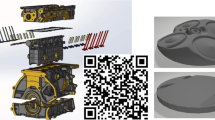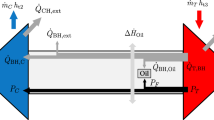Abstract
Turbocharging port-injected Natural Gas (NG) engines allows them to recover gaseous-fuel related power gap with respect to gasoline engines. However, turbolag reduction is necessary to achieve high performance during engine transient operations and to improve vehicle fun-to-drive characteristics. Significant support for the study of turbocharged Compressed Natural Gas (CNG) engines and guidelines for the turbo-matching process can be provided by 1-D numerical simulation tools. However, 1-D models are predictive only when a careful tuning procedure is set-up and carried out on the basis of the experimental data. In this paper, a 1-D model of a Heavy-Duty (HD) turbocharged CNG engine was set up in the GT-POWER (Gamma Technologies Inc., Westmont, IL, US) environment to simulate transient operations and to evaluate the turbolag. An extensive experimental activity was carried out to provide experimental data for model tuning. The model buildup and tuning processes are described in detail with specific reference to the turbocharger model, whose correct calibration is a key factor in accounting for the effects of turbine flow pulsations. The second part of the paper focuses on the evaluation of different strategies for turbolag reduction, namely, exhaust valve variable actuation and spark timing control. Such strategies were aimed at increasing the engine exhaust-gas power transferred to the turbine, thus reducing the time required to accelerate the turbocharger group. The effects of these strategies were examined for tip-in maneuvers at a fixed engine speed. Depending on the engine speed and the applied turbolag reduction strategy, turbolag reductions from 70% to 10% were achieved.
Similar content being viewed by others
Abbreviations
- A:
-
advance of EVO
- bmep:
-
brake mean effective pressure
- BSR:
-
blade speed ratio
- cp :
-
air specific heat at constant pressure
- C:
-
engine brake torque
- CA:
-
crank angle
- CNG:
-
compressed natural gas
- Cs :
-
isentropic gas velocity
- E:
-
Wiebe exponent
- E-EVO:
-
early exhaust valve opening
- EVO:
-
exhaust valve opening
- HRR:
-
heat release rate
- IC:
-
inter-cooler
- L:
-
lift (of the exhaust valve)
- ṁ:
-
mass flow rate
- MAP:
-
manifold absolute pressure
- N:
-
engine speed
- n:
-
turbocharger shaft speed
- NG:
-
natural gas
- p:
-
in-cylinder pressure at EVO
- P:
-
prelift (of the exhaust valve)
- PFP:
-
peak firing pressure
- PR:
-
pressure ratio/turbine pressure ratio
- SOC:
-
start of combustion
- ST:
-
spark timing
- t:
-
time
- T:
-
temperature
- U:
-
rotor blade tip speed
- UEGO:
-
universal exhaust gas oxygen
- VVA:
-
variable valve actuation
- WC:
-
Wiebe constant
- WG:
-
waste gate
- WOT:
-
wide open throttle
- xb :
-
burned mass fraction
- γ :
-
ratio of specific heats (of air)
- η :
-
efficiency
- θ :
-
crank angle
- τ :
-
duration of the transient
- O:
-
total conditions
- ′:
-
burned gas
- —:
-
time-averaged value
- air:
-
air
- c:
-
combustion
- cmp:
-
compressor
- exh:
-
exhaust gases
- in:
-
inlet
- max:
-
maximum value
- red:
-
reduced
- trb:
-
turbine
References
Baines, N. C. (2005). Fundamentals of Turbocharging. Edwards Brothers Inc. Ann Arbour. Michigan. USA.
Bush, P., Telford, C., Boam, D. and Bingham, J. (2000). A design strategy for four cylinder SI automotive engine exhaust systems. SAE Paper No. 2000-01-0913.
d’Ambrosio, S., Spessa, E., Vassallo, A., Ferrera, M. and Peletto, C. (2006). Experimental investigation of fuel consumption, exhaust emissions and heat release of a smalldisplacement turbocharged CNG engine. SAE Paper No. 2006-01-0049.
Doebelin, E. O. (1990). Measurement Systems — Application and Design. 4th Edn. McGraw Hill. New York.
Ehrlich (1998). Characterization of Unsteady On-Engine Turbocharger Turbine Performance. Ph. D. Dissertation. Purdue University.
Galindo, J., Luján, J. M., Serrano, J. R., Dolz, V. and Guilain, S. (2004). Design of an exhaust manifold to improve transient performance of a high-speed turbocharged diesel engine. Experimental Thermal and Fluid Science 28,8, 863–875.
Galindo, J., Luján, J. M., Serrano, J. R., Dolz, V. and Guilain, S. (2006). Description of a heat transfer model suitable to calculate transient processes of turbocharged diesel engines with one-dimensional gas-dynamic codes. Applied Thermal Engineering 26,1, 66–76.
Gamma Technologies (2006). GT-POWERV® 6.2 User’s Manual.
Iwasaki, M., Ikeya, N., Marutani, Y. and Kitazawa, T. (1994) Comparison of turbocharger performance between steady flow and pulsating flow on engines. SAE Paper No. 940839.
Kato, K., Igarashi, K., Masuda, M., Otsubo, K., Yasuda, A., Takeda, K. and Sato, T. (1999). Development of engine for natural gas vehicle. SAE SP-1436 ‘Combustion in SI Engines’, 52–60.
Rakopoulos, C. D. and Giakoumis, E. G. (2006). Review of thermodynamic diesel engine simulations under transient operating conditions. SAE Paper No. 2006-01-0884.
Sammut, G. and Alkidas, A. C. (2007). Relative contributions of intake and exhaust tuning on SI engine breathing - A computational study. SAE Paper No. 2007-01-0492.
Westin, F. and Ångström, H. E. (2002). A method of investigating the on-engine turbine efficiency combining experiments and modeling. IMechE Paper C602/029/2002.
Westin, F. and Ångström, H. E. (2003). Simulation of a turbocharged SI-engine with two software and comparison with measured data. SAE Paper No. 2003-01-3124.
Westin, F., Rosenqvist, J. and Ångström, H. E. (2004). Heat losses from the turbine of a turbocharged SI engine — Measurements and simulation. SAE Paper No. 2004-01-0996.
Westin, F. (2005). Simulation of Turbocharged SI Engines — With Focus on the Turbine. Ph.D. Dissertation. The Royal Institute of Technology. Sweden.
Winkler, N. and Ångström, H. E. (2007). Study of measured and model based generated turbine performance maps within a 1D model of a heavy-duty diesel engine operated during transient conditions. SAE Paper No. 2007-01-0491.
Zhang, F. R., Okamoto, K., Morimoto, S. and Shoji, F. (1998). Methods of increasing the BMEP (Power Output) for natural gas spark ignition engines. SAE SP-1371 ‘Combustion Processes in Engines Utilizing Gaseous Fuels’, 11–19.
Author information
Authors and Affiliations
Corresponding author
Rights and permissions
About this article
Cite this article
Baratta, M., Spessa, E. & Mairone, P. Numerical investigation of turbolag reduction in HD CNG engines by means of exhaust valve variable actuation and spark timing control. Int.J Automot. Technol. 11, 289–306 (2010). https://doi.org/10.1007/s12239-010-0037-x
Received:
Revised:
Published:
Issue Date:
DOI: https://doi.org/10.1007/s12239-010-0037-x




